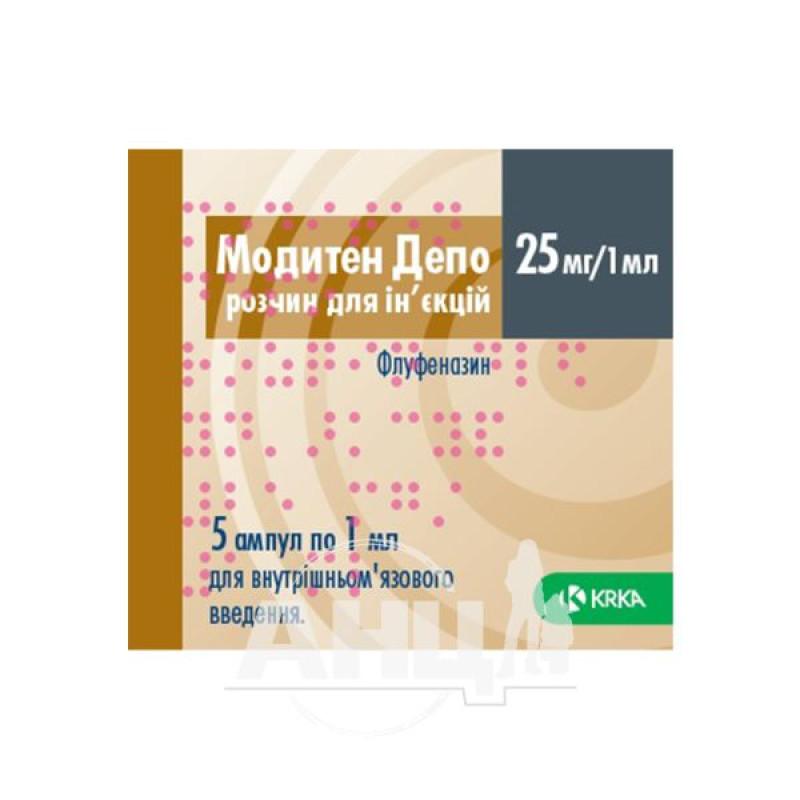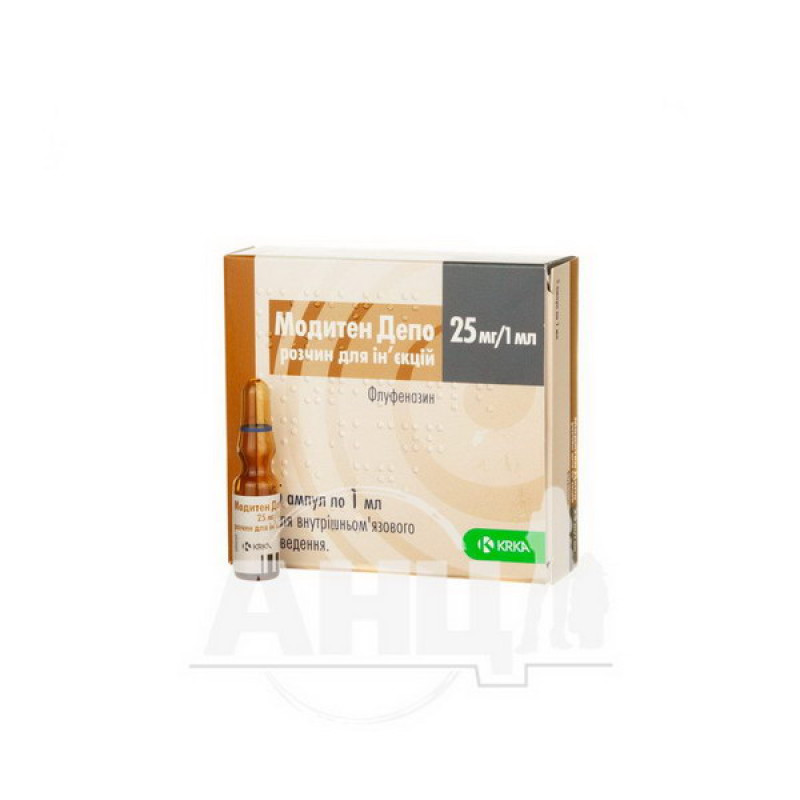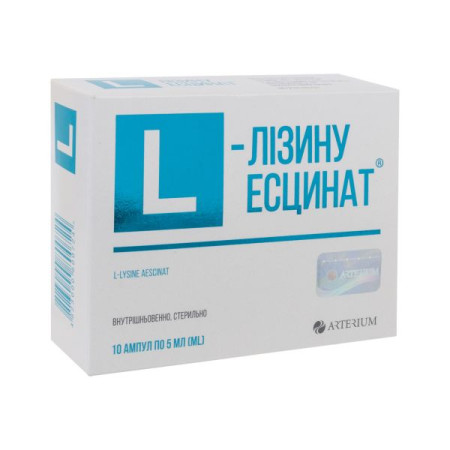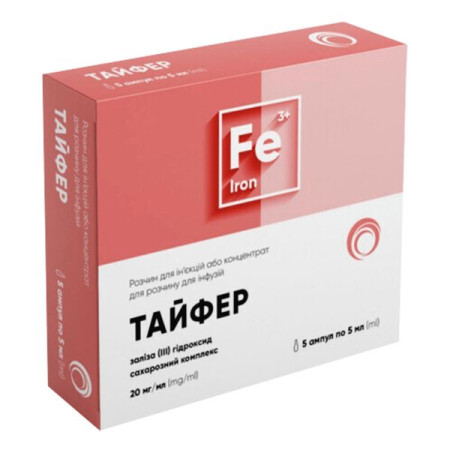Moditen Depot solution for injection 25 mg/1 ml ampoule 1 ml No. 5

Instructions Moditen Depot solution for injection 25 mg/1 ml ampoule 1 ml No. 5
Composition
active ingredient: fluphenazine decanoate;
1 ml of solution for injection contains 25 mg of fluphenazine decanoate;
Excipients: benzyl alcohol, sesame oil.
Dosage form
Solution for injection.
Main physicochemical properties: transparent oily solution of yellowish color, practically free of mechanical inclusions.
Pharmacotherapeutic group
Antipsychotics. Phenothiazines with a piperazine structure.
ATX code N05A B02.
Pharmacological properties
Pharmacodynamics.
Fluphenazine is a very potent phenothiazine neuroleptic belonging to the group of classical neuroleptics. Schizophrenia is associated with impaired dopamine receptor sensitivity. Fluphenazine is a better blocker of cerebral dopamine D2 and D1 receptors than other standard neuroleptics. Like other neuroleptics, but to a lesser extent, fluphenazine also blocks serotonin 5HT2 and 5HT1 receptors, adrenergic alpha-1 receptors, histamine H1 receptors and cholinergic muscarinic receptors, so the anticholinergic and sedative effects are less pronounced than some other classical neuroleptics. Dopamine receptor blockade occurs in all three dopamine systems, nigrostriatal, mesolimbic, and tuberoinfundibular, so in addition to clinical efficacy, various undesirable effects are also possible, including extrapyramidal reactions and increased prolactin secretion.
Moditen Depot is a parenteral phenothiazine drug of prolonged action. It has an extended duration of action.
An important advantage of the dosage form of Moditen Depot is the reliability of patient treatment. This is very important for outpatient treatment, as mentally ill patients often take medication irregularly or even refuse to take it.
Pharmacokinetics.
Fluphenazine decanoate, an ester of fluphenazine and decanoic acid, is the active ingredient of Moditen Depot. Fluphenazine decanoate is characterized by gradual hydrolysis with the release of pharmacologically active fluphenazine, which enters the systemic circulation. The onset of action is from 24 to 72 hours. The biological half-life of fluphenazine from plasma is from 7 to 10 days and reaches 14.3 days after several consecutive injections. A standard injection of Moditen Depot has an individual effect on mentally ill patients, which can last from 15 to 35 days. A stable state is reached after 4 to 6 weeks.
Acute toxicity studies in various animal species have shown fluphenazine to be highly toxic. After oral administration to mice, the LD50 value was 220 mg/kg. The target organ of toxicity is the liver. Long-term administration (up to one year) of fluphenazine at 1 mg/kg/day or more to rats caused behavioral changes, which were expressed in changes in the reactivity of the central nervous system.
Fluphenazine is relatively safe to administer during pregnancy. No changes were observed in the fetuses of rats given fluphenazine hydrochloride at a dose of 100 mg/kg/day or fluphenazine decanoate at a dose of 25 mg/kg/day. The substance is not teratogenic in rats or rabbits, but there have been reports of cleft palate in mice and various abnormalities in chicken embryos. Fluphenazine inhibits calmodulin, leading to changes in sperm function in laboratory animals.
Fluphenazine has no mutagenic potential; on the contrary, protective activity against the mutagenic effect of benzo-alpha-pyrene has been established. This substance has no carcinogenic effect.
Indication
Long-term maintenance therapy of chronic forms of schizophrenia. Prevention of exacerbations of schizophrenia.
Contraindication
Hypersensitivity to fluphenazine or to any of the excipients of the drug.
Overt or suspected subcortical cerebral disorders.
Serious disorders of consciousness, severe cerebral atherosclerosis, pheochromocytoma, severe renal or hepatic insufficiency, heart failure, hypersensitivity to other phenothiazines.
Acute intoxication with central nervous system inhibitors (alcohol, antidepressants, neuroleptics, sedatives, tranquilizers, hypnotics and narcotics).
Children under 12 years old.
Interaction with other medicinal products and other types of interactions
CNS depressants; analgesics; alcohol
Concomitant administration of fluphenazine enhances the effects of alcohol, CNS depressants (hypnotics, sedatives) and potent analgesics. Concomitant administration with narcotic analgesics may cause hypotension, CNS depression and respiratory depression. Concomitant administration of fluphenazine with antihistamines, antipsychotics, hypnotics and narcotics may increase CNS depression. Barbiturates, non-barbiturate hypnotics, carbamazepine, griseofulvin, phenylbutazone and rifampicin increase the metabolism of phenothiazines, while paracetamol, chloramphenicol, disulfiram, MAO inhibitors, selective serotonin reuptake inhibitors and oral contraceptives inhibit it.
Alpha-blockers
Fluphenazine is an antagonist of adrenaline and other sympathomimetics and inhibits the hypotensive effect of alpha-blockers.
When used concomitantly with anticoagulants, fluphenazine enhances their effects, therefore periodic monitoring of the prothrombin index is recommended.
Drugs that affect the QT interval
Concomitant use of fluphenazine with class IA and III antiarrhythmics, arsenic trioxide, halofantrine, levomethadyl acetate, mesoridazine, thioridazine, pimozide, sparfloxacin, gatifloxacin, moxifloxacin, dolasetron mesylate, meflocaine, sertindole or cisapride may cause prolongation of the QT interval.
Electrolyte balance
Concurrent use of drugs that cause electrolyte imbalance (including hypokalemia or hypomagnesemia) increases the risk of ventricular arrhythmia.
Cytochrome P450 system
Fluphenazine is metabolized by the cytochrome P450 enzyme system (partly CYP2D6). Inhibition of this metabolic pathway by other drugs or increased activity of the CYP2D6 enzyme may lead to increased fluphenazine concentrations and an increased risk of side effects, including QT prolongation. Such drugs include antiarrhythmics, direct-acting antidepressants and antipsychotics, beta-blockers, protease inhibitors and opiates.
Tricyclic antidepressants
Phenothiazines may interfere with the metabolism of tricyclic antidepressants. Plasma concentrations of tricyclic antidepressants may be increased, resulting in possible enhanced or prolonged sedative and antimuscarinic effects, as well as cardiac arrhythmias.
Lithium
Concomitant administration of lithium with fluphenazine may increase neurotoxicity.
ACE inhibitors and thiazide diuretics
Concomitant use of phenothiazines and ACE inhibitors or thiazide diuretics may cause hypotension.
Antihypertensive drugs
The antihypertensive effect of guanethidine, clonidine and other antiadrenergic drugs may be reduced.
Clonidine
Clonidine may reduce the neuroleptic effect of phenothiazines.
Beta-blockers
Concomitant use of beta-blockers with phenothiazines may increase plasma concentrations of beta-blockers.
Metrizamide
Concomitant administration of metrizamide with fluphenazine may induce seizures.
It is recommended to discontinue fluphenazine 48 hours before myelography and not to administer for at least 24 hours after myelography.
Epinephrine (adrenaline) and other adrenomimetics
Phenothiazines are pharmacological antagonists of the above-mentioned drugs, and their concomitant use may lead to arterial hypotension.
Levodopa
Phenothiazines may reduce the effects of antiparkinsonian drugs.
Anticholinergics/antimuscarinic drugs
Concomitant administration of fluphenazine with anticholinergics may potentiate cholinergic receptor blockade, especially in elderly patients. The antimuscarinic effect may be enhanced or prolonged.
Antiepileptic drugs
Fluphenazine may reduce the effect of antiepileptic drugs.
Antidiabetic drugs
Phenothiazines may increase blood glucose levels because they affect carbohydrate metabolism. Therefore, some dose adjustments of antidiabetic drugs are necessary in patients with diabetes.
Cimetidine
Cimetidine may reduce plasma concentrations of phenothiazines.
Amphetamine/anorexic drugs
Amphetamine/anorexic drugs are pharmacological antagonists of fluphenazine.
When administering Moditen Depot concomitantly with anticholinergics or antimuscarinic drugs, careful monitoring of the patient's condition and individual determination of the dose of the drugs should be established.
When concomitantly administered with beta-blockers and phenothiazines, a dose reduction of both groups of drugs is recommended.
Application features
Moditen Depot is not intended for the treatment of non-psychiatric disorders or for short-term use (less than 3 months).
Moditen Depot is ineffective for the treatment of behavioral disorders in mentally retarded patients.
Increased mortality in elderly patients with dementia
Data from two large studies have shown that elderly patients with dementia who took neuroleptics had a slightly increased risk of death compared with those who did not take them. There is insufficient data to determine the magnitude of the increased risk, and the reason for this increased risk is unknown.
The drug is not intended for the treatment of behavioral disorders associated with dementia.
The drug should be prescribed with great caution to patients with seizures, as it lowers the seizure threshold and, therefore, may lead to seizures and generalized epileptic seizures.
Cardiovascular effects
Fluphenazine should be used with caution in patients with cardiovascular disease or a family history of QT prolongation.
Caution is required when fluphenazine is prescribed to patients with cardiovascular diseases (heart failure, ischemic myocardial disease, dangerous heart rhythm disorders), as blood pressure may drop significantly. If the pressure drops, adrenaline should not be used.
Thromboembolism
Fluphenazine should be administered with caution to patients with renal insufficiency.
Fluphenazine should be prescribed in the lowest effective doses to elderly and debilitated patients, as side effects may occur more frequently in these patients.
Fluphenazine should be prescribed with caution to patients who work in conditions of elevated temperature or have contact with organophosphorus insecticides.
Fluphenazine should be prescribed with caution to patients with hyperthyroidism, acute lung diseases, Parkinson's disease, angle-closure glaucoma, myasthenia gravis, and prostatic hypertrophy.
Patients scheduled for surgery who are taking fluphenazine are at risk of hypotensive reactions and therefore require lower doses of anesthetics or CNS depressants.
Fluphenazine should not be used in patients with abnormal blood or liver function or in patients taking drugs that cause such disorders, as cholestatic or cholestatic-hepatocellular jaundice may occur. Jaundice usually develops within the first two to four weeks of treatment and is not always dose-related or duration-dependent.
Caution should be exercised in patients with a history of breast tumors (although studies have not confirmed any association between increased prolactin secretion and breast tumors during treatment with phenothiazines).
As with all phenothiazines, asymptomatic pneumonia may develop when taking fluphenazine.
Periodic monitoring of blood counts is recommended during treatment with fluphenazine, as isolated cases of leukopenia, agranulocytosis, thrombocytopenia, eosinophilia and pancytopenia have been reported.
Tardive dyskinesia may develop in patients taking neuroleptics, including fluphenazine, therefore the lowest effective dose should be used in patients requiring long-term treatment, and the need for long-term treatment should be reassessed regularly. If signs of tardive dyskinesia appear, neuroleptics should be discontinued.
Like other antipsychotics, fluphenazine has been associated with neuroleptic malignant syndrome. This is a rare idiosyncratic reaction characterized by hyperthermia, muscle rigidity, akinesia, hypotension, stupor, and coma. Hyperthermia is often an early symptom of this syndrome. The antipsychotic should be discontinued immediately and appropriate supportive therapy should be initiated with close monitoring.
During treatment with fluphenazine, the concomitant use of other antipsychotic drugs should be avoided.
If extrapyramidal disorders occur, antiparkinsonian drugs should be prescribed.
If the patient is taking anti-Parkinsonism medication during treatment with Moditen Depot and suddenly stops using this medication, he should continue taking the prescribed anti-Parkinsonism medication for a few more days.
Fluphenazine should be used with caution in patients with renal insufficiency or impaired renal function.
When used simultaneously with drugs that disrupt sweating, thermoregulation disorders are possible, especially in elderly patients and during hot and humid weather.
Special information about some excipients
Moditen Depot contains benzyl alcohol. It is contraindicated in premature newborns or infants and children under 3 years of age.
Sesame oil can rarely cause serious allergic reactions.
Use during pregnancy or breastfeeding
Contraindicated during pregnancy and breastfeeding.
Ability to influence reaction speed when driving vehicles or other mechanisms
The drug may have a strong influence on the ability to drive and operate complex mechanisms. Patients should be warned about this. The doctor assesses the patient's ability to drive taking into account the course of the underlying disease and the response to treatment.
Method of administration and doses
The most effective dose and frequency of administration should be determined individually.
Patients previously receiving maintenance therapy with depot phenothiazine derivatives
The usual initial dose is 12.5 to 25 mg of Moditen Depot. Subsequent doses and intervals between injections are determined individually. The interval between individual injections is usually 15 to 35 days. If doses exceeding 50 mg are required, they are gradually increased by 12.5 mg. A single dose should not exceed 100 mg.
Patients who have not previously received therapy with phenothiazine derivatives
Patients who have not previously been treated with phenothiazines should initially be treated with short-acting injectable or oral phenothiazines. When it is determined that patients tolerate phenothiazines well, they can be transferred to Moditen Depot without prior treatment with short-acting injectables. An initial dose of 12.5 mg of Moditen Depot is administered intramuscularly. If there are no serious side effects, a further dose of 25 mg can be administered after 5 to 10 days. The dose is then adjusted individually.
If the patient has already taken phenothiazines, they can be replaced with Moditen Depot. Initially, an initial intramuscular dose of 12.5 mg is used to check the tolerability of Moditen Depot, and then the dose is adjusted individually.
Elderly patients
Elderly patients require lower doses – 1/3 to 1/4 of the standard dose for younger adults.
If an extrapyramidal reaction develops, antiparkinsonian drugs are administered.
The drug is administered as a deep intramuscular injection. The needle and syringe must be dry.
If the doctor finds that the dose of Moditen Depot is too low, treatment can be supported with oral forms of phenothiazines.
Patients with renal and hepatic impairment
Lower doses (3.125 to 6.25 mg) are indicated for patients with renal impairment.
Patients with impaired liver function should not take fluphenazine.
Children aged 12 to 18 years
Moditen Depot is not recommended for use in children aged 12 to 18 years, as there is no data on the safety and efficacy of use in this group of patients. If necessary, the initial dose is from 6.25 mg to 18.75 mg of fluphenazine. Subsequent doses and intervals between injections are determined individually. The interval between individual injections is usually from 7 to 21 days. If a higher dose is required, it is gradually increased by 6.25 mg. A single dose should not exceed 25 mg.
This injection solution should not be mixed with other injection solutions.
Children.
The drug is contraindicated in children under 12 years of age.
Overdose
Overdose and intoxication can lead to serious extrapyramidal disorders, a significant drop in blood pressure, miosis, hypothermia, urinary retention, electrocardiographic changes and cardiac arrhythmias similar to those seen with quinidine overdose; sedation and impaired consciousness, which can lead to loss of consciousness and lack of reflexes, spasms and coma. There is no specific antidote. Treatment is symptomatic. The patient's condition should be carefully monitored. Sodium bicarbonate and magnesium sulfate are effective in arrhythmias. Extrapyramidal disorders are treated with antiparkinsonian drugs. In severe hypotension, only noradrenaline can be prescribed; adrenaline will further reduce blood pressure.
Side effects
Frequency of adverse reactions:
very common (≥1/10);
common (≥1/100 to <1/10);
sometimes (≥1/1000 to <1/100);
rare (≥1/10,000 to <1/1,000);
very rare (<1/10,000);
unknown (cannot be estimated from available data).
Within each frequency grouping, adverse reactions are presented in order of decreasing seriousness.
Adverse reactions are listed by system organ class and frequency of occurrence.
According to research
In isolated cases, transient increases in serum cholesterol concentrations have been observed in patients taking oral fluphenazine.
General violations and violations of the terms of use
Phenothiazines may cause thermoregulation disorders. Severe hypothermia and hyperpyrexia have been reported with moderate to high doses of phenothiazines. Elderly patients and patients with hypothyroidism may be particularly susceptible to hypothermia. The risk of hyperpyrexia is increased in hot or humid weather or with concomitant use of drugs that impair sweating, such as drugs for the treatment of Parkinson's disease. Headache, lens intolerance, nasal congestion, nausea, fatal cases.
From the side of the blood and lymphatic systems
not known: leukopenia1, agranulocytosis1, thrombocytopenia1, eosinophilia1, pancytopenia1.
From the nervous system
common: extrapyramidal disorders (pseudoparkinsonism, dystonia, akathisia, oculogyric crises, opisthotonus, hyperflexia), tardive dyskinesia2 (involuntary movements of the tongue, face, mouth, lips, trunk and limbs);
sometimes: headache;
Rare: Neuroleptic malignant syndrome3 with hyperthermia, muscle rigidity, akinesia, decreased blood pressure, stupor and coma.
From the organs of vision
sometimes: blurred vision, glaucoma;
Rare: darkening of the lens or cornea of the eye.
Gastrointestinal tract
sometimes: nausea, loss of appetite, salivation, dry mouth, constipation, intestinal obstruction.
Renal and urinary disorders
sometimes: polyuria, bladder paralysis;
Rare: enuresis, urinary incontinence, urinary incontinence.
From the endocrine system
sometimes: gynecomastia, abnormal lactation, libido disorders with impotence, irregular menstruation, false positive pregnancy test.
From the heart
sometimes: tachycardia;
Rare: prolongation of the QT interval and T wave, ventricular arrhythmias (ventricular tachycardia, ventricular fibrillation);
very rare: arrhythmia, fibrillation;
not known: cardiac arrest, torsades de pointes arrhythmia.
From the vascular side
sometimes: moderate hypertension, blood pressure fluctuations;
Not known: Venous thromboembolism, including cases of pulmonary embolism and deep vein embolism.
From the respiratory tract
sometimes: nasal congestion.
On the part of the immune system
very rare: asthma, laryngeal edema, angioedema.
Skin and mucous membranes
sometimes: sweating;
Liver and biliary tract disorders
Rare: cholestatic jaundice.
From the psyche
rarely: drowsiness, lethargy;
not known: nervousness, agitation or abnormal thoughts, depression, increased suicidal tendencies.
Metabolic disorders
sometimes: increased appetite, weight gain.
Pregnancy, postpartum and perinatal conditions
Not known: neonatal withdrawal syndrome. Extrapyramidal symptoms in newborns.
From the reproductive system
Rare: priapism, ejaculation disorders.
1 Monitoring of blood counts is recommended during treatment with fluphenazine (see section "Special warnings and precautions for use").
2 During long-term treatment or after discontinuation of the drug, some patients may experience tardive dyskinesia, which is characterized by choreoathetoid involuntary movements of the tongue, facial muscles, mouth or jaw (such as tongue protrusion, cheek puffing, mouth puckering, chewing movements), body muscles or limbs. The manifestations of this syndrome and the deterioration caused by it are very variable. This syndrome occurs either during treatment with a reduced dose or after the end of therapy. It is very important to detect signs of tardive dyskinesia syndrome as early as possible. In order to detect this syndrome at an early stage, periodic dose reductions of the drug (if the patient's condition allows) and careful monitoring of the patient during such periods of time are recommended. This approach is very important, since treatment with neuroleptics may mask the manifestations of tardive dyskinesia.
3 Neuroleptic malignant syndrome has been associated with treatment with antipsychotic drugs, including fluphenazine (see section 4.4). In this case, Moditen Depot should be discontinued and appropriate measures should be taken.
Other adverse reactions
Several sudden, unexpected, and unexplained deaths have been reported in hospitalized patients receiving phenothiazines.
If severe adverse reactions occur, treatment with fluphenazine should be discontinued.
Elderly patients may be more sensitive to the sedative or hypotensive effects of the drug.
Reporting of suspected adverse reactions
Reporting of suspected adverse reactions after the registration of a medicinal product is important. This allows for continued monitoring of the benefit/risk balance of the medicinal product. Information on any suspected adverse reactions should be reported in accordance with legal requirements.
Expiration date
18 months.
Storage conditions
Store in the original packaging to protect from light at a temperature not exceeding 25 °C.
Keep out of reach of children.
Packaging
1 ml of solution for injection in an ampoule; 5 ampoules in a blister; 1 blister in a cardboard box.
Vacation category
According to the recipe.
Producer
KRKA, d.d., Novo mesto, Slovenia/КРКА, dd, Novo mesto, Slovenia.
Address
Smarjeska cesta 6, 8501 Novo mesto, Slovenia.
There are no reviews for this product.
There are no reviews for this product, be the first to leave your review.
No questions about this product, be the first and ask your question.
















